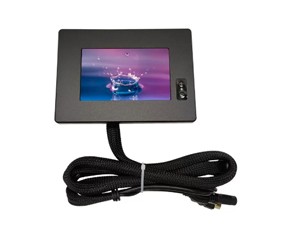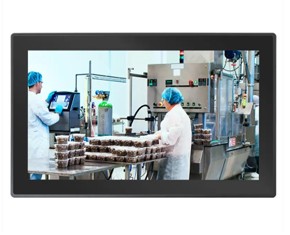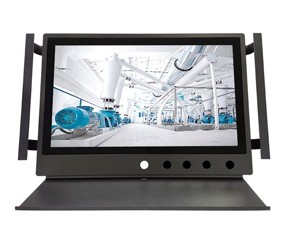Apr. 07, 2025
Capacitive touchscreens, which rely on the capacitance of your finger, have become standard in smartphones, tablets, and various electronic devices. However, it's essential to consider the lifespan of this touchscreen technology for both manufacturers and users. The durability and functionality of these touchscreens over time are key aspects that need to be addressed.
Understanding the factors that impact the lifespan of capacitive touchscreens is critical. From daily use to environmental influences, elements such as finger capacitance can significantly affect their longevity. In this discussion, we'll explore the factors that either contribute to the resilience of these touchscreen technologies or cause them to deteriorate with wear and tear.
So, how can you ensure your capacitive touchscreen devices remain responsive and functional for as long as possible? Let’s dive into the secrets of maximizing the lifespan of capacitive touchscreens with some practical tips.
Environmental factors like temperature, humidity, and sunlight exposure play a major role in the lifespan of touchscreen devices. Extreme temperatures—both hot and cold—can cause the materials in capacitive touchscreens to expand or contract, leading to potential damage. High humidity levels may introduce moisture into the device, causing corrosion or electrical malfunctions. Prolonged exposure to direct sunlight can also cause the screen to discolor or degrade, especially from the effect of finger capacitance.
Everyday usage gradually reduces the performance of capacitive touchscreens. Continuous tapping, swiping, and scratching can create micro-abrasions on the screen surface, affecting its sensitivity or even creating unresponsive areas. It’s important to handle screens with care, avoiding sharp objects that could scratch or damage the surface. Finger capacitance and the sensor’s accuracy are often impacted by these minor damages over time.
The materials used to build the touchscreen, particularly the cover glass and capacitors, are crucial in determining its longevity. Touchscreens made from high-quality materials tend to withstand wear and tear better and last longer. The dielectric constant of the materials used for constructing the screen also plays a vital role. Materials with a higher dielectric constant offer better insulation, reducing signal interference and improving the overall performance of the touchscreen.
Capacitive touchscreens with additional protective coatings can be more resistant to scratches and impacts. However, improper maintenance can lead to decreased sensitivity due to the effect these coatings have on the electric field.
The size of the touchscreen also impacts its durability. Larger screens are more prone to stress from their increased surface area and weight distribution. This can result in structural issues, like cracks or delamination, especially when the glass is frequently impacted or roughly handled. Careful design and construction are essential to ensure that larger screens are durable enough to withstand these challenges.
While the screen's surface is most vulnerable to damage, the underside of a capacitive touchscreen is equally important to protect. The underside contains sensitive components like sensors and circuitry, which are prone to impact or moisture damage. During manufacturing, proper sealing and insulation should be used to safeguard these critical areas from external factors.
Capacitive Touch All In One Panel PC
One effective way to extend the life of your touchscreen is by applying a screen protector or tempered glass. These protective layers shield the screen from external elements like coins or keys that might scratch the surface. Investing in a quality protector can help preserve the screen's appearance and maintain its functionality by increasing capacitance and acting as a dielectric layer.
Keep your capacitive touchscreen clean to maintain its sensitivity and performance. Dirt, oils, and fingerprints can build up over time, impacting responsiveness. Use a soft cloth or specialized cleaning solution to gently clean the screen in circular motions, avoiding any damage to the capacitors or disruption of the electrical charge.
It’s essential not to apply excessive pressure when using your capacitive touchscreen. These screens are designed to detect light touches, and applying too much force can cause internal damage. Being mindful of the pressure you apply when tapping icons or typing ensures the touchscreen remains functional for a longer period.
Capacitive touchscreens are sensitive to liquids, which can damage the capacitor and internal circuits. Accidental spills or moisture can seep into the device and cause malfunctions. To protect your device, avoid using it near water or consider using a waterproof case if you're in environments where liquid exposure is likely.
Extreme heat or cold can also negatively affect capacitive touchscreens. Prolonged exposure to high or low temperatures can cause internal damage and decrease performance. Try to shield your touchscreen from direct sunlight, heaters, or freezing conditions to preserve its longevity.
Capacitive touchscreens offer superior sensitivity compared to other touchscreen technologies like resistive or infrared screens. This high sensitivity is achieved through capacitance, which is detected by the interaction of your finger with the screen.
Capacitive touchscreens respond to even the lightest touch, unlike resistive touchscreens, which require pressure. This heightened sensitivity enables more seamless navigation and precise control.
A significant advantage of capacitive screens is their ability to detect multiple points of contact simultaneously. This allows for multitouch gestures like pinch-to-zoom, swipe, and rotate, enhancing the user experience during tasks such as browsing, gaming, or image manipulation.
Mutual capacitance technology used in most capacitive screens improves responsiveness. The screen's array of electrodes tracks finger movements with great accuracy, ensuring smooth interaction without lag.
Integrating capacitive touchscreens into interactive mirrors or kiosks involves higher costs than traditional displays. These costs include not only the hardware but also software development tailored to interactive touch systems. The components involved, such as capacitors and touch-sensitive interfaces, add to the overall expense.
Software development is another significant factor. Unlike standard displays, interactive systems require custom software to enable touch interactions and gesture recognition. This increases development costs, but the result is a more user-friendly, responsive interface.
While the initial investment in capacitive touchscreens for interactive mirrors and kiosks may be high, the benefits include enhanced user experience, longer lifespan, and greater customer engagement, making it a worthwhile consideration.
Mutual capacitance is the technology that enables capacitive touchscreens to detect multiple touch points at once, facilitating multitouch capabilities. This technology works by measuring the change in electrical charge when a finger touches the screen, allowing for precise input recognition and smooth execution of multitouch gestures.
In contrast to self-capacitance, which can only detect one touch point at a time, mutual capacitance allows for multiple simultaneous inputs, such as pinch-to-zoom or swiping with multiple fingers. This makes capacitive screens more versatile and responsive.
Overall, mutual capacitance technology revolutionizes how we interact with devices, offering intuitive touch capabilities for a wide range of applications, from smartphones to interactive kiosks.



Capacitive Vs Resistive Touch Screens: When to Choose?
Mar. 14, 2025

How to Choose Capacitive Touch Monitors
Dec. 27, 2024